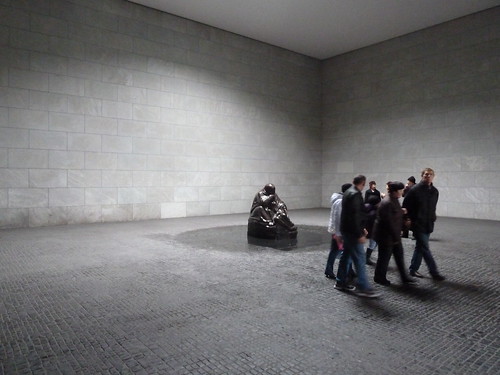Like any big city, Berlin has a lot of museums - art museums, history museums, even a “Museum Island.” However, since there is so much recent history here - from the rise and fall of Nazi Germany, to the German Democratic Republic, to the fall of the Berlin Wall - the museums and monuments have a certain immediacy and relevance to them than any other city we can think of.
Read about a few of them after the jump!
Among the most extensive World War II related museums is the Topography of Terror. Situated on Wilhelmstrasse just a few blocks away from Checkpoint Charlie, this museum on the former site of the SS and Gestapo headquarters explains the horrific tactics used by the Nazi party in their conquest for domination. The open-air portion of the museum featured a significant stretch of the Berlin Wall left standing, as well as several recently-excavated foundations used by the Nazis for prisons and bunkers.
The Berlin Wall Memorial, currently undergoing expansion, also features a stretch of the Wall, as well as a powerful representation of the East Berlin “death strip.” Here, the obtrusiveness of the wall was made clear: it infringed on a cemetery, so many of the buried were removed during construction; a beloved church stood in the way of it, so it was demolished; whole streets were blocked off; people were forced out of their homes; guard towers were built; and, of course, many were killed trying to escape to West Berlin.
We checked out the GDR Museum, a small but packed museum, crowded with artifacts from life in East Germany. Clothing, furniture, reading materials, and even a Trabant, the most popular car in East Germany, were featured. Our timing wasn’t great on this visit, as a few days later the museum opened up an extension, just about doubling its size.
On Unter den Linden, right near Museum Island is the extensive German History Museum, covering important events in what is now Germany from 2,000 years ago up to the end of the World War I. One could take several trips to this museum, looking at the many thousands of artifacts and art pieces. (We here historied out after just a couple of hours.)
For just two Euros - a promotional price for the first Monday of the month - we checked out Berlinische Galerie, a modern art museum. Modern artworks from the 1920s displayed the roots of modern art in Germany. (We’re biased, of course, but it had nothing on the Walker in Mpls.)
Most recently, we visited the Bauhaus Museum. Designed by Walter Gropius, the founder of the Bauhaus school, the museum offered a great overview of the beginnings of this world famous school and style. Chairs, lamps, paintings, drawings, and architectural models filled the exhibit, and a free audio guide greatly enhanced this gallery for us.
With a little under two weeks left here, there are many more museums, memorials, and monuments to see; The Jewish Museum, the Kennedy Museum, the Reichstag Dome, and the East Side Gallery are just a few of the sights we plan on getting to before our month is up.








No comments:
Post a Comment